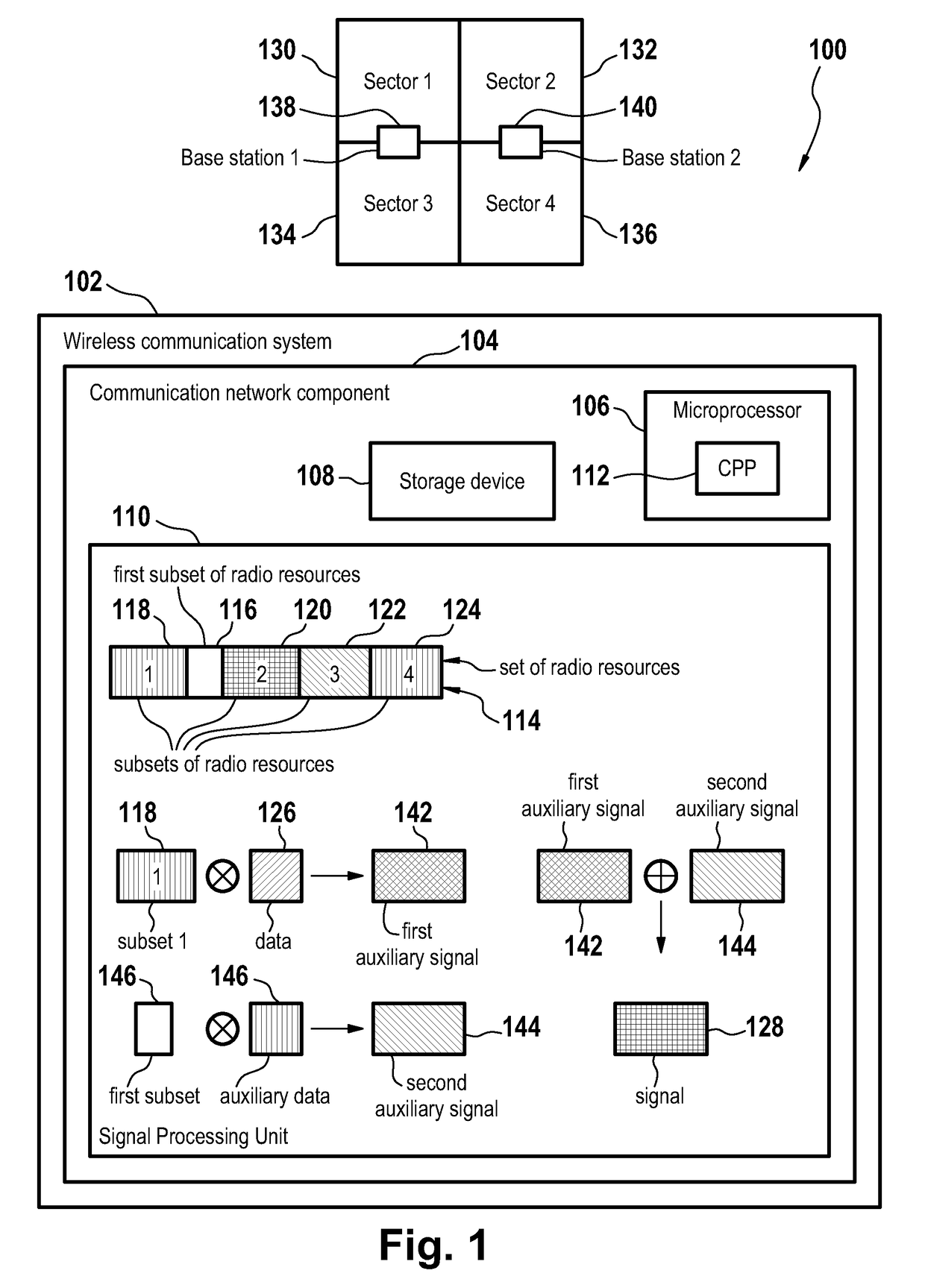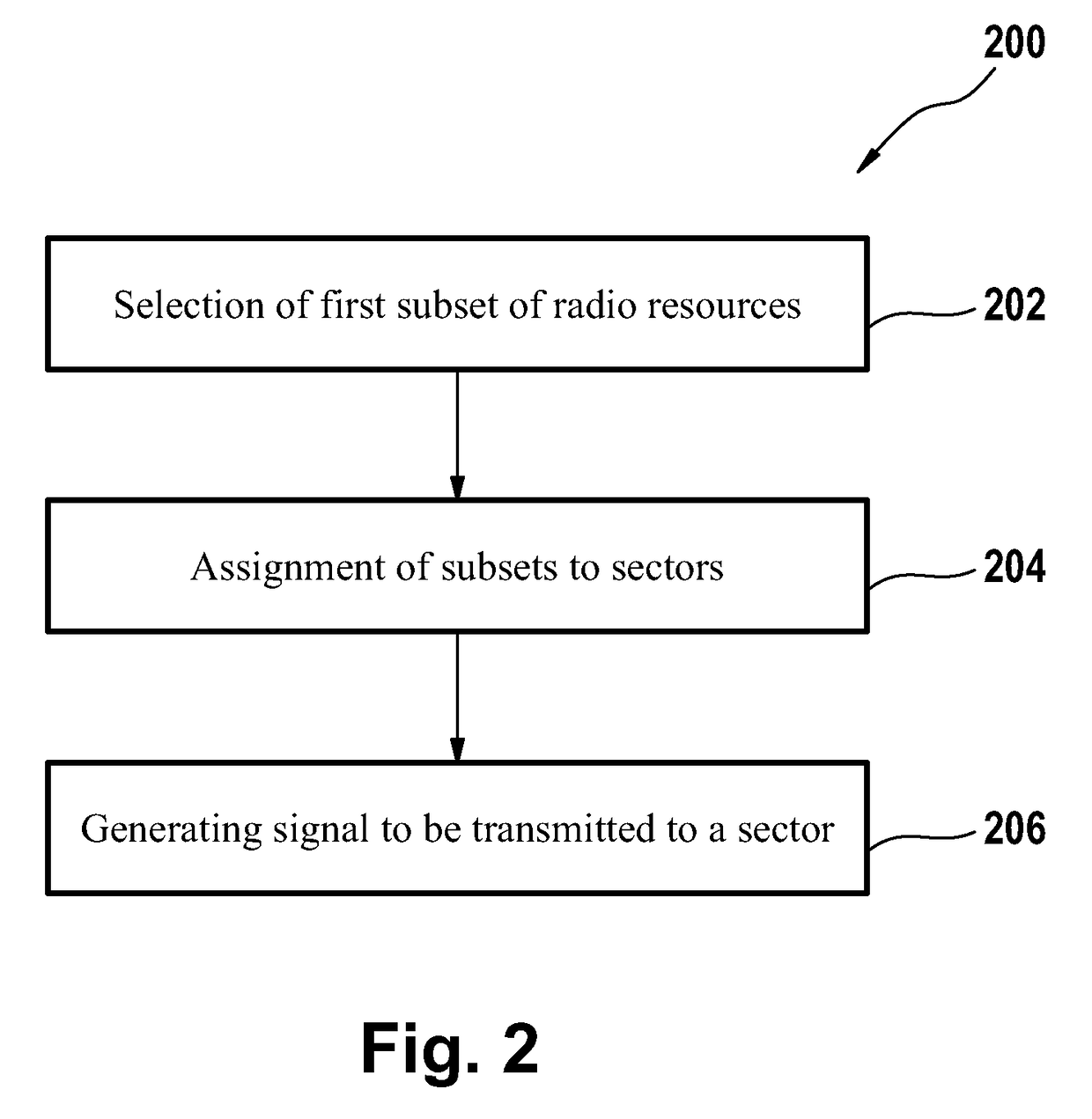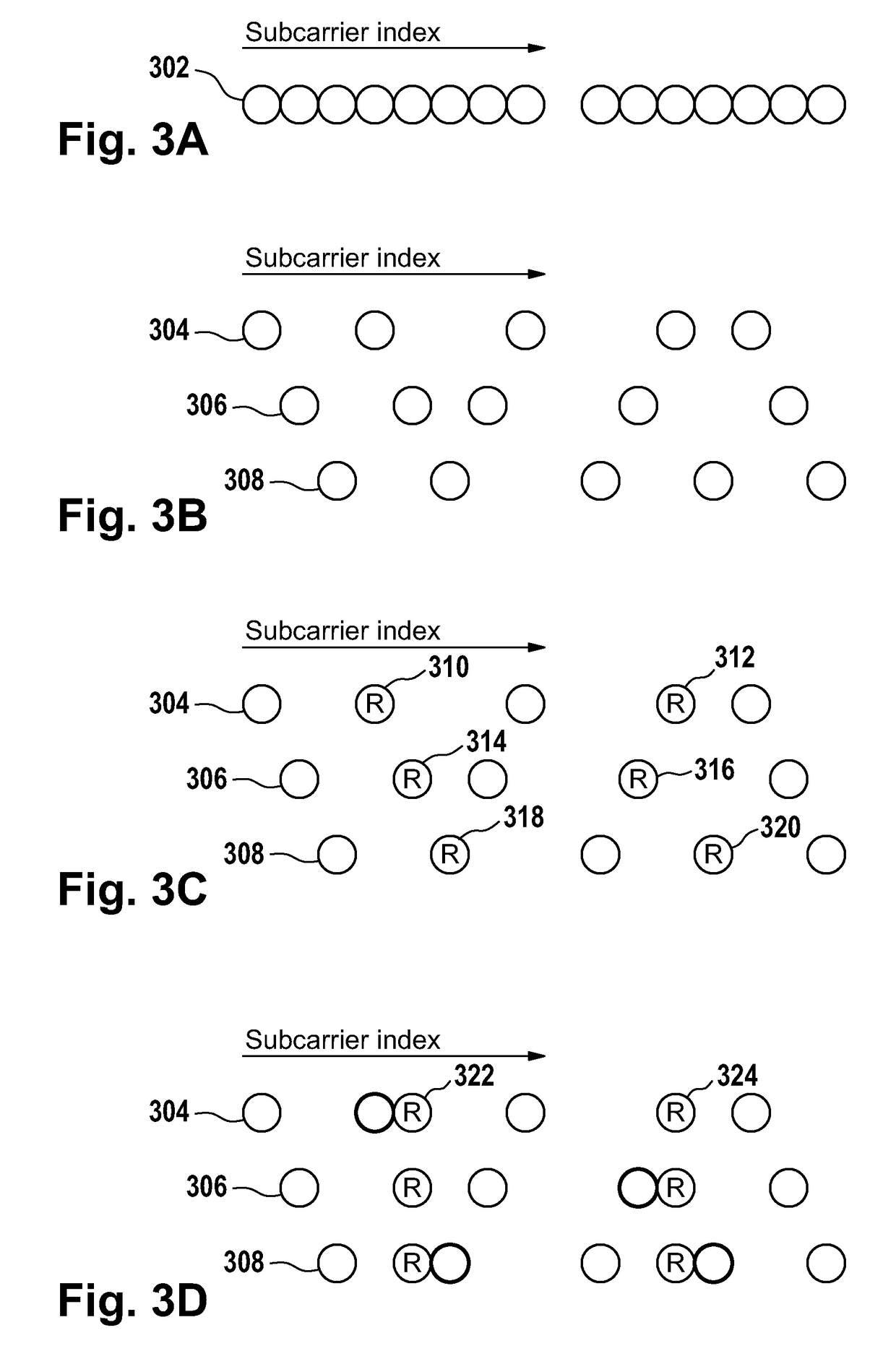Method of reducing a peak to average power ratio of a modulated signal
a modulated signal and average power technology, applied in the direction of transmission path sub-channel allocation, multi-frequency code system, transmission path division, etc., can solve problems such as hammering practical implementations, and achieve the effect of reducing the peak to average power ratio, spectral efficiency and the range of the broadband wireless access system employing the method in accordance with the invention
- Summary
- Abstract
- Description
- Claims
- Application Information
AI Technical Summary
Benefits of technology
Problems solved by technology
Method used
Image
Examples
Embodiment Construction
[0045]FIG. 1 is a block diagram 100 showing schematically a wireless communication system 102 serving a plurality of sectors consisting of sector 1130, sector 2132, sector 3134, and sector 4136, whereby a signal which is designated for sector 1130 or sector 3134 is transmitted by base station 1138, and whereby a signal which is designated for sector 2132 or sector 4136 is transmitted by base station 2140. The base stations 138 and 140 are comprised in the wireless communication systems 102.
[0046]The wireless communication system 102 further comprises a communication network component 104. The communication network component 104 comprises a microprocessor 106, a storage device 108, and a signal processing unit 110. The signal processing unit 110 provides a set of radio resources 114.
[0047]The microprocessor 106 executes a computer program product 112 which is loaded from the storage device 108 for example during the startup of the communication network component 104. The computer pro...
PUM
 Login to View More
Login to View More Abstract
Description
Claims
Application Information
 Login to View More
Login to View More - R&D
- Intellectual Property
- Life Sciences
- Materials
- Tech Scout
- Unparalleled Data Quality
- Higher Quality Content
- 60% Fewer Hallucinations
Browse by: Latest US Patents, China's latest patents, Technical Efficacy Thesaurus, Application Domain, Technology Topic, Popular Technical Reports.
© 2025 PatSnap. All rights reserved.Legal|Privacy policy|Modern Slavery Act Transparency Statement|Sitemap|About US| Contact US: help@patsnap.com



